How to create digital products your audience will love (and buy)
Creating a digital product sounds exciting—you probably have 10 ideas right at this moment—until you sit down to do it.
What should you sell? How do you turn that vague idea into something valuable? Why would people even pay for it?
Your mind is racing with possibilities, doubts, and "what-ifs." But here’s the truth—you don’t have to guess your way through it.
This guide breaks down the entire process step by step—from finding the right digital product idea to creating something useful and worth paying for. By the end, you’ll know:
- The basics of digital products, including the 4 different types
- How to research and validate your product idea
- The exact steps to build it (without burning out)
Let’s get into it!
Firstly, what is a digital product?
A digital product is an intangible item that’s created, sold, and delivered online—such as ebooks, courses, software, or design templates.
The concept of digital products started back in 1971 when Michael Hart, an American author, launched Project Gutenberg. He typed out the U.S. Declaration of Independence and made it available for free on an early computer network, essentially creating the first eBook. His vision was simple but powerful: make books and knowledge accessible to everyone through digital means.
Fast forward to today, and digital products are everywhere. They’ve opened new doors for creators, educators, and entrepreneurs to share their expertise, art, and ideas—without the overhead of physical goods.
Examples of modern digital products
Digital products come in many forms. These are the most popular👇
- Online courses and workshops
- Ebooks and guides
- Templates and tools
- Stock assets like images
- Software and apps
Advantages over physical products
The debate between physical and digital products isn’t much of a debate at all. When it comes to ease of selling and fulfillment, digital products win by a landslide.
Scalability
Make it once, and sell it forever! Of course, depending on your product, you might need to update it now and then—like refreshing old content or fine-tuning features. But you won’t be dealing with inventory issues or manufacturing delays, that’s for sure!
Zero inventory costs
You don’t need to worry about storage space, stock tracking, or boxes piling up in your garage. There’s no money tied up in production runs, and no stress over shipping delays or lost packages. With digital products, you can run the whole business from your laptop—simple as that.
Automated delivery
After setup, your digital product runs (mostly) on autopilot—selling and delivering around the clock with no hands-on work required. Most platforms handle fulfillment for you, so you can spend more time creating, marketing, or just taking a breath.
Higher profit margins
Once you’ve covered the upfront costs—like hiring a designer for your ebook, buying a decent mic for course recordings, or investing in software development—each sale is mostly profit.
Of course, if your product includes a community element, there would be some ongoing expenses. You may need to hire a community manager to answer questions, keep people engaged, and moderate discussions.
Still, compared to physical products, digital ones come with much lower overhead—and far better margins. You can even get into digital product dropshipping (basically selling ready-made digital products created and delivered by a third party)—which can be extra lucrative since you don’t even have to produce the product yourself.
Market size and opportunity
Digital product appeal is real. But perhaps what you, as a creator, are mostly concerned about is whether there’s real money in digital products.
Short answer? Yes. And lots of it.
The digital product market is massive. And it’s only getting bigger. Consumers are spending more on digital goods than ever before. Younger generations, in particular, are driving demand for digital-first products across multiple categories.
Just look at the numbers:
- U.S. consumers spend around $120–$130 per month on digital goods and services—that’s over $1,400 a year. (Deloitte)
- Younger consumers (18-34) spend 1.4x more on digital goods than older generations, signaling even greater long-term growth. (same study)
- The global eBook market alone is expected to reach $14.92 billion in 2025, with 1.2 billion readers by 2029. (Statista)
So yes—there’s money to be made. But before you get carried away with the idea of passive income, let’s take a minute to talk about what that really means.
The truth about passive income from digital products
We’ve all heard the dream: create a digital product once, kick back, and watch the dollars roll in while you binge Netflix or nap on a beach. Sounds amazing, right?
But that only happens after a lot of hard work. First, you have to:
- research the market and figure out what people want
- create the product
- build your brand
- set up your marketing
All of that takes time and effort. Your ideas might even flop once or twice (or three times) before you get it right. And even after launch, there’s more to do: updating content, answering customer questions, tweaking your sales funnel, or adjusting your pricing as things shift.
So, if you're hoping to throw something together quickly and watch the money hit your bank account, don’t assume this is an easy way to check out of the hard work required in any business.
But—if you're willing to put in the effort to create something valuable, something people actually want—then you're in the right place. Up next, we’ll walk through proven strategies to help you build your digital product the right way.
4 Types of digital products (with real examples)
There are many digital products you can create. Some require more active involvement on your part, while others can be created once and sold indefinitely.
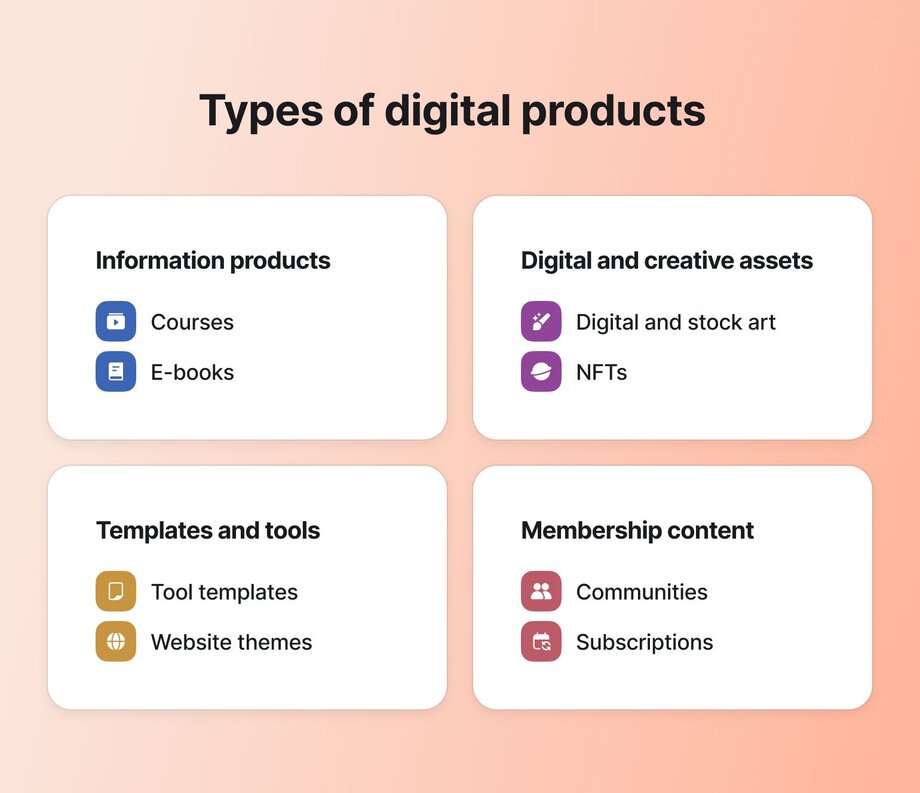
Here’s a breakdown of the four major types of digital products, along with real-world examples of how they work.
1. Information products
These let you turn what you know into something people can learn from—on their own time, at their own pace. Perfect if you’ve got valuable experience or a teachable skill, or are just a few steps ahead of someone else, and want to share the lessons learned.
Popular formats include:
- Online courses: Structured video or text-based lessons that guide learners through a topic. For example, Ali Abdaal’s Part-Time YouTuber Academy is a premium course that helps creators build and grow their YouTube channels.
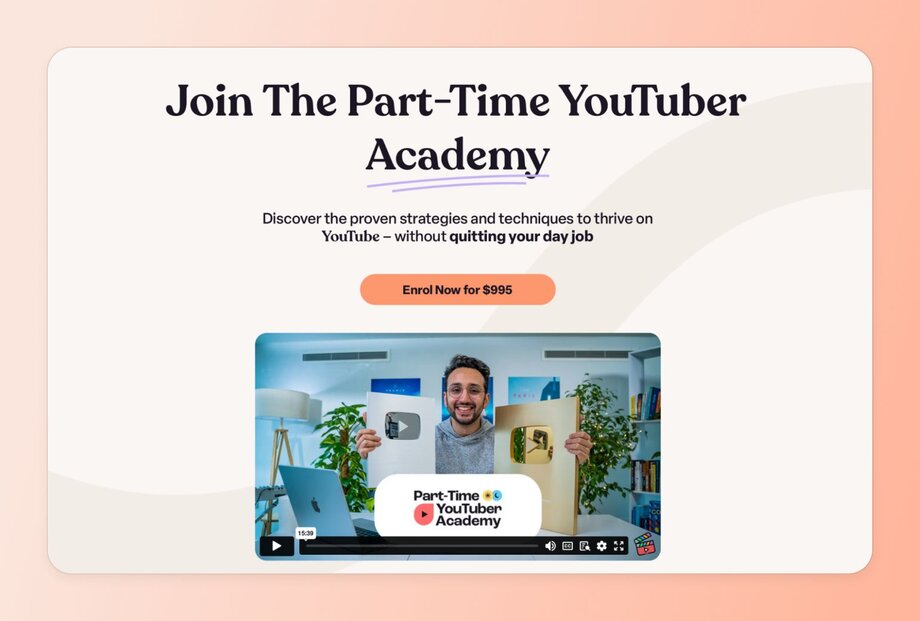
👉Ali has built a $1.9M per cohort YouTube course. Want to learn his secrets? Discover his top tips for crafting a core offer for your business.
- Ebooks, guides, and playbooks: Downloadable PDFs packed with insights, strategies, or step-by-step instructions. A simple example of this would be Thomas McKinlay’s The Science-based Playbook of Ecommerce Optimization, which contains practical strategies and tips to help you build an online store.
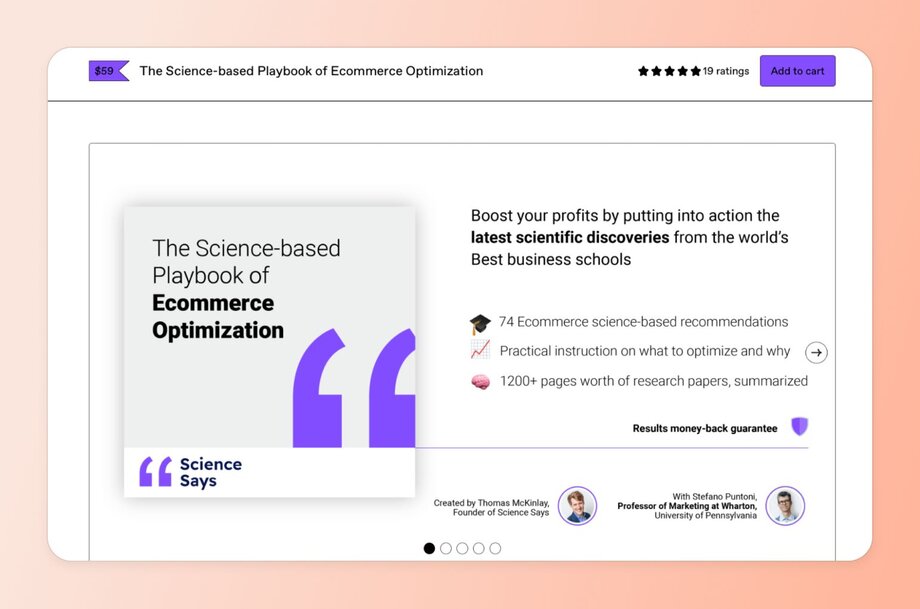
- Workbooks and cheat sheets: Printable resources designed for implementation, rather than passive learning. For example, creator Danica Nelson focuses on educational content around travel and budgeting, and created various budget templates on fixupzn for travel, business, and personal finance tracking.
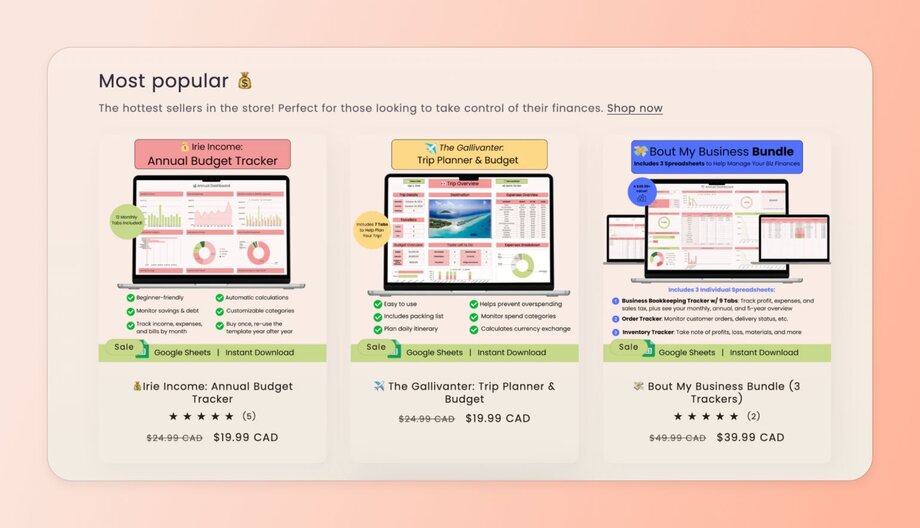
2. Digital art and creative assets
For artists, designers, and content creators, digital products offer a scalable way to make money without relying on intensive, custom client work. Instead of trading time for money, you create assets once and sell them over and over again.
These can be anything from Canva and Photoshop templates to stock photos, videos, and non-fungible token (NFT) artwork, just like this NFT painting by Neoropila.
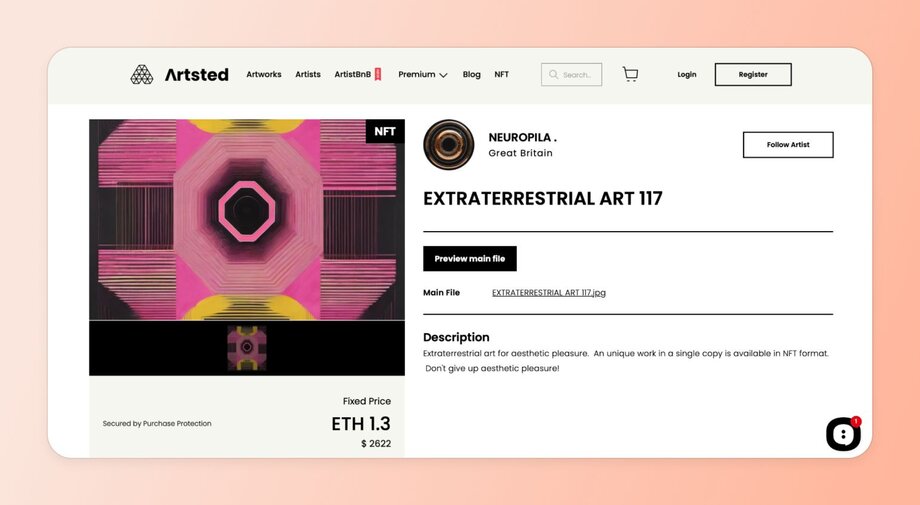
Another beautiful example is Cheyenne Anstice, a Circle user who created The Wholeness Shop. She sells beading patterns and courses that help makers find flow, confidence, and creative fulfillment through the meditative art of beadwork.
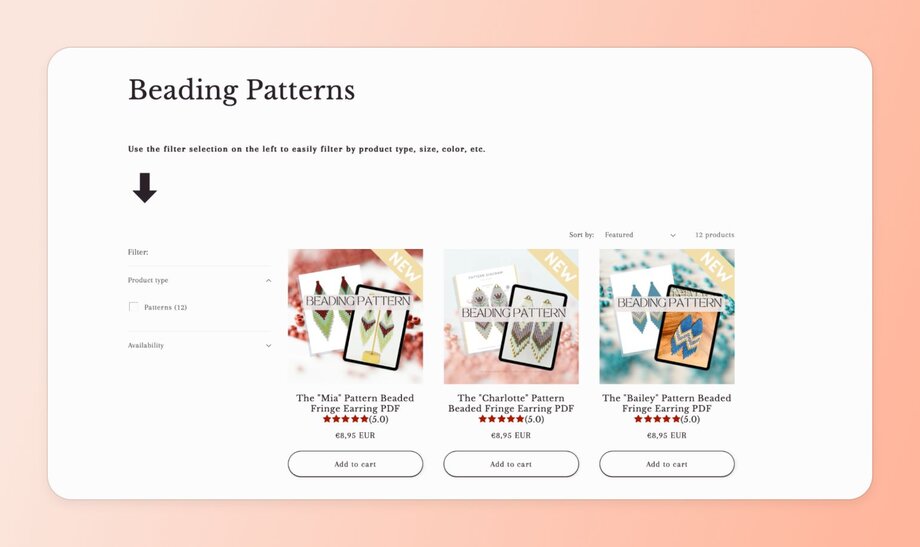
3. Templates and tools
People pay for convenience, and that’s exactly what digital tools provide. Whether it’s a time-saving template, an automation script, or a full-fledged app, software-based products can be incredibly profitable—especially if they solve a specific pain point.
Some examples:
- Notion and Airtable templates: Pre-built dashboards or workflows that help users organize tasks, track projects, or improve productivity. Example: Marie Poulin’s Notion Mastery templates and course by the same name (hosted, wisely, on Circle!) are pre-built productivity systems that help users manage tasks, notes, and projects in one place.
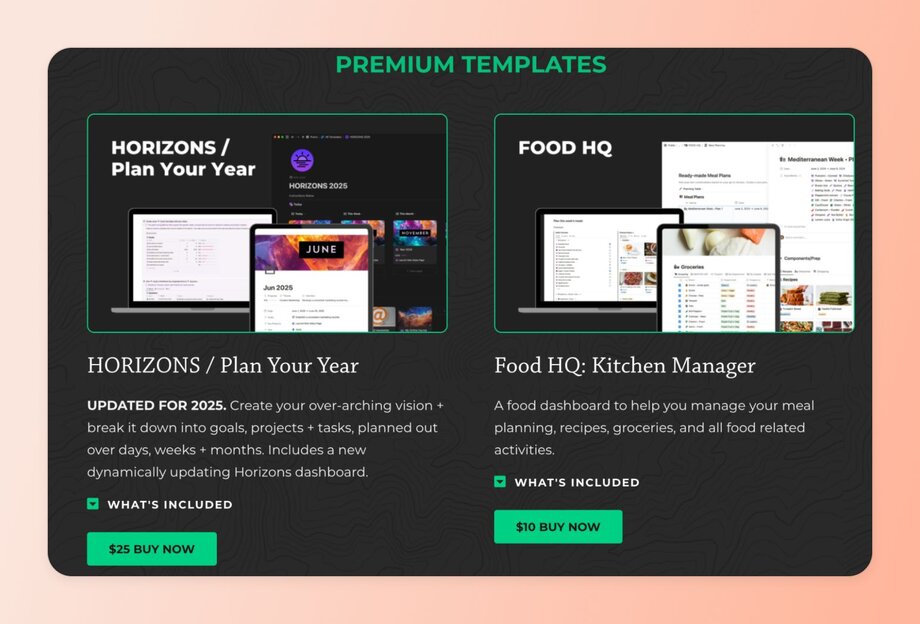
- Website themes and UI kits: Custom website designs, WordPress themes, or front-end design components that developers, designers, and creators can easily implement. Example: A Shopify website theme built by wpbingo and sold via an online marketplace.
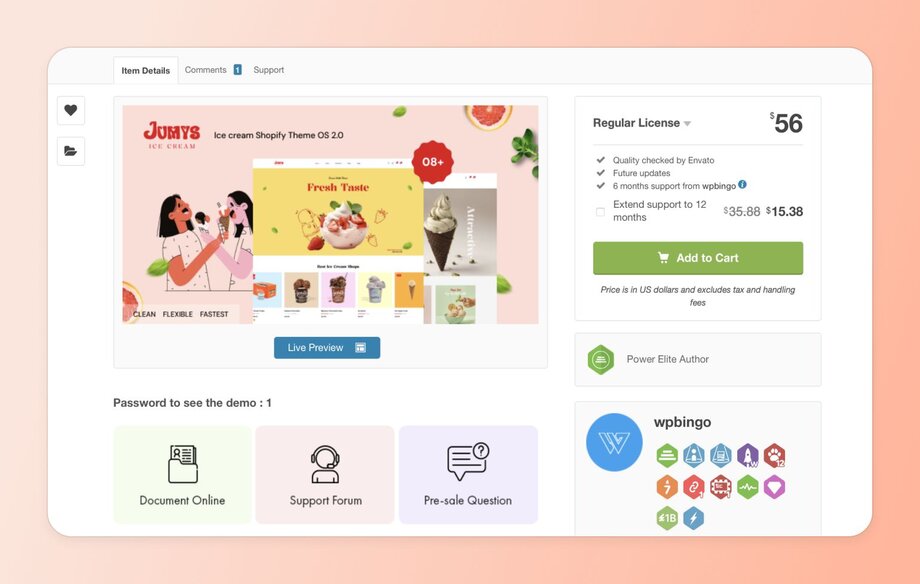
- Dashboards: Pre-configured templates for tracking finances, managing content calendars, or visualizing business data. An awesome example is this CreatorHub Notion template from Victor Abarca.
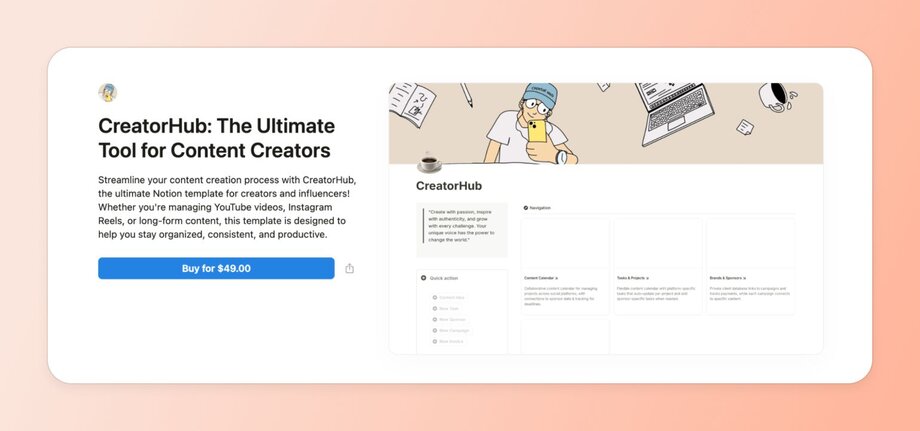
4. Membership content
Membership-based digital products create recurring revenue by offering ongoing value to your audience. Instead of a one-time sale, you build a community where members get access to exclusive content, premium tools, or both—typically through a monthly or yearly subscription.
People are often willing to pay for expert insights, networking, and a sense of belonging. These communities can be hosted on platforms like Circle, which lets you create private, interactive spaces with discussion forums, live events, and gated content.
Here are a few other types of membership content:
- Content subscriptions: These include premium newsletters, deep-dive reports, or behind-the-scenes content. A great example is Go Long by Tyler Dunne, a paid newsletter that delivers in-depth football coverage beyond the headlines. With exclusive player stories, Q&As, and insider insights, it gives fans a more personal, behind-the-scenes view of the game.
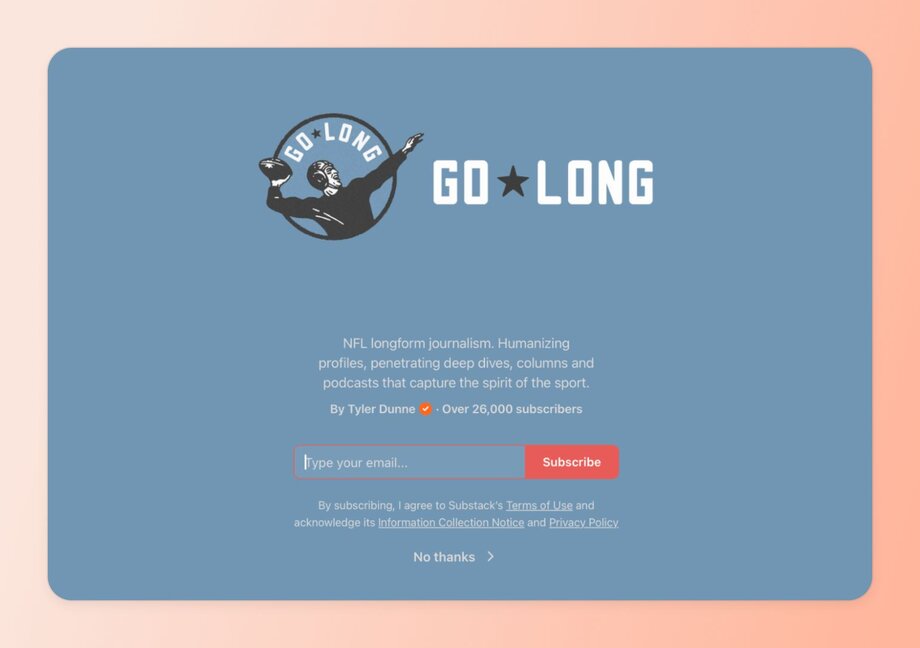
- Membership groups and coaching programs: High-ticket memberships with guidance or mentorship. Examples from Circle’s Discover network: The Collective by Allison Venditti, a career group for working moms, and 10X Designers by Fons Mans, a design-focused community with workshops and mentoring.
👉 Looking for the best membership platforms? Our guide breaks down seven options, comparing their key features, pros and cons, and pricing.
- Digital resource libraries: Subscribers get ongoing access to a growing collection of templates, worksheets, and tools for their niche—plus the occasional group coaching sessions or live events. SwipeFiles by Corey Haines is a great example of a resource library for marketers that is supported by a membership.
The step-by-step guide: How to create a digital product people actually want
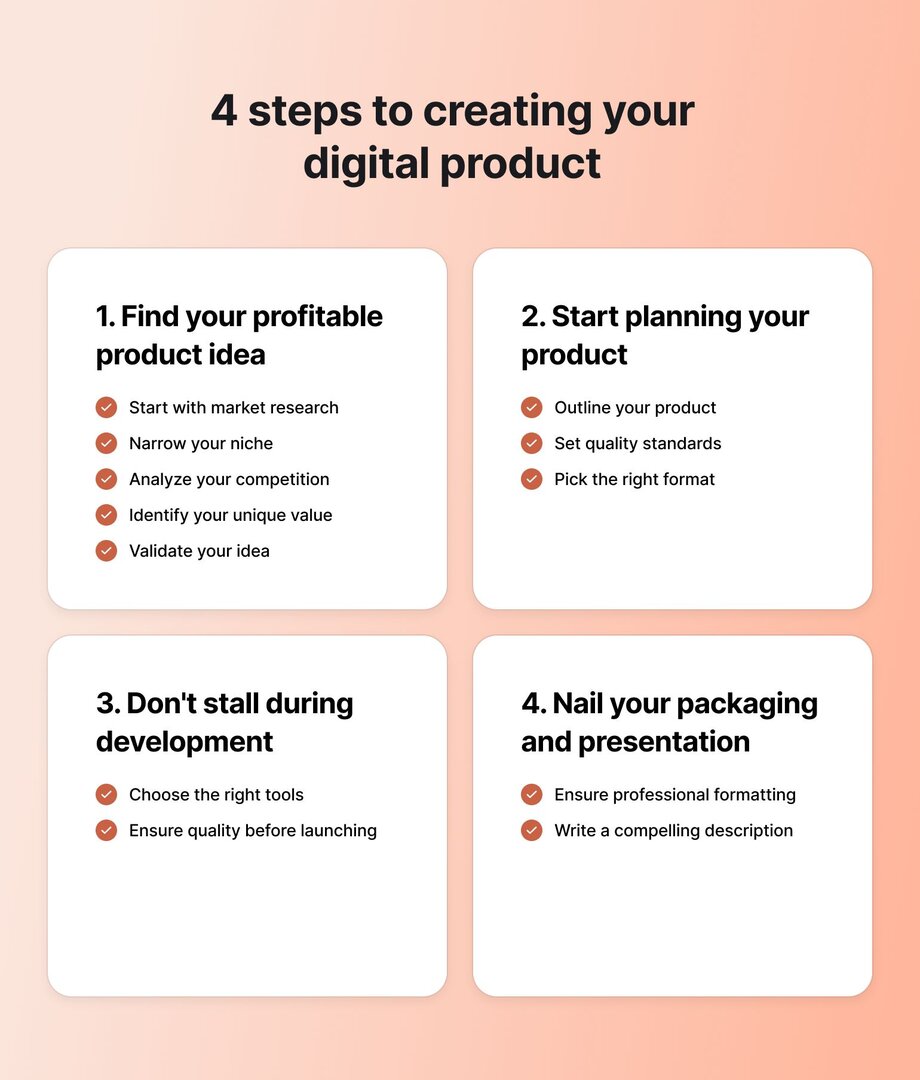
Step 1: Find your profitable product idea
Before you create anything, you need to be sure your digital product idea is profitable. Too many creators jump straight into building without checking if there’s actual demand—only to waste weeks (or months) on something that doesn’t sell.
Start with some initial market research
An excellent digital product solves a specific problem or meets a real need. But how do you find out what people actually want?
Start by looking at what’s already selling—not to copy what someone else is doing, but to spot gaps in the market.
Here are a few ways to study market demand:
- Google Search and auto-suggest: Type in keywords related to your product idea and see what auto-fills. These are real search queries from potential buyers.
- Reddit, Quora, and Facebook groups: What are people repeatedly asking for help within your niche? Look for common pain points and frustrations.
- Etsy, Gumroad, and Udemy: Browse best-selling digital products to see what’s trending. If a product has lots of sales and reviews, there’s clear demand.
Narrow your niche
As you research ideas for your digital product, it’s also important to think about the niche you want to focus on. By “niche,” we mean narrowing down both your product idea and audience—and choosing a specific area where you have real experience or knowledge and can offer something valuable.
Going too broad makes it harder to stand out or connect with the right people. If you try to appeal to everyone, you’ll likely end up resonating with no one.
Take Codie Sanchez, CEO of Contrarian Thinking. She built an 8-figure education business with high-profit margins—without spending anything on ads. How? She chose a niche she understood really, really well. Instead of covering general topics like “how to build wealth,” she focused on teaching others how to buy small businesses like laundromats (to build wealth!)
Codie uses a simple framework—the 3Cs—to choose a profitable niche:
- Cash: Are people already spending money in this niche?
- Crowd: Is there an engaged audience with a clear problem to solve?
- Curiosity: Are you genuinely interested in this topic?
The goal is to specialize enough to stand out, but not too much that your market is too small.
Analyze the competition
Competition is actually a good sign because it means there’s a market for your product. For each of your ideas, you should study your competitors in order to spot opportunities:
- Read their reviews: Check out the comments on platforms like Udemy, Etsy, or Gumroad. What do customers appreciate? What complaints keep coming up? (Hint: these are your opportunities!)
- Look at their pricing: Are they charging a one-time fee or using a subscription model? Is there a smarter way you could price your product?
- Study their marketing: How are they getting the word out? Are they relying on SEO, social media, partnerships, email marketing—or something else?
Identify your unique value proposition (UVP)
Once you've narrowed your niche, it’s time to figure out what makes your product different—and why someone should choose yours over the competition. That’s your unique value proposition.
A clear UVP does two things: it sharpens your marketing message and gives potential buyers a reason to care. Here’s a simple formula to help you write one:
![Unique value proposition formula for digital products: 'My [digital product] helps [specific audience] [achieve specific result or solve specific problem]—without [common frustration or roadblock].'](https://cdn.builder.io/api/v1/image/assets%2Fd5e2d72a033944e1a916c5c34902a1ff%2F05594a3785a049c39c18c7aece3d2f1b?width=920)
Examples:
- My [template bundle] helps [wedding planners] [book more clients]—without [spending hours creating proposals from scratch.]
- My [email marketing templates] help [small business owners] [write high-converting emails]—without [hiring a copywriter.]
- My [Notion workspace] helps [freelancers] [manage projects and clients]—without [messy spreadsheets or scattered notes.]
📖 If you’re stuck on how to articulate what makes your product stand out, this brand messaging framework is a great place to start—it’ll help you clarify your positioning and speak directly to the people who need what you’re offering.
Validate your idea
Once you have a potential idea, the next step is to test the demand. One simple way is to ask your audience. If you’re on social media, put the idea out there and ask directly: “Would you pay for this?”
You can also create a free lead magnet—like a download, a short webinar, or even a sales page for your offer with a “get notified” or “join the waitlist” link. Basically, any small, useful resource related to your idea so you can see how many people download it. That can give you a sense of interest without much risk.
And if similar products from competitors are doing well, that’s a good sign too. The key is to find a way to offer something different (ie. from your unique perspective) or better (different experience, more in-depth, etc).
Step 2: Start planning your product
Planning might not be the most exciting part, but it’s foundational work you need to do before diving into product creation. Without it, you risk scope creep or a final product that doesn’t deliver.
Outline your product
Start with a simple, detailed outline. Ask yourself: What’s the core transformation my product promises? Then strip it down to just what’s needed to help someone get that result.
If you’re making a course, list out the modules and lessons. For an ebook, outline the chapters. For templates or toolkits, decide which assets should be included. Keep it focused, useful, and easy to navigate.
Tools like Miro or Whimsical can help you map out the user journey—what your course buyers need to learn or do to reach the outcome.
Set quality standards
High-quality products build trust and increase conversions. Decide upfront:
- Will your product be beginner-friendly or for advanced users?
- Does it need to look highly polished, or is a clean, simple layout enough?
- What add-ons—like tutorials, checklists, or FAQs—would improve the experience?
Pick the right format
Choose the best format for your content and audience:
- Courses → Video, audio, or slides?
- Ebooks & guides → PDF, EPUB, or interactive format?
- Templates → Editable Canva, Notion, Google Sheets, or Figma files?
Step 3: Don’t stall during development
Choose the right tools
The tools you use will depend on the type of product you’re creating. Here are a few recommendations based on your product type:
| Product type | Tools |
|---|---|
| Online courses and communities | Circle |
| Ebooks and guides | Canva, Adobe Express |
| Templates and digital assets | Figma, Notion, Photoshop |
| Software and no-code tools | Bubble, Webflow, Airtable |
Ensure quality before launching
Don’t rush your product!
Take time to review, refine, and test—both by yourself, and a set of eyes from a contractor or friend. Proofread your content, make sure templates are properly formatted, and double-check that all links and downloads work. If you’re offering a course or tool, run a small beta test—early feedback can help you catch issues and improve the experience before launching to a wider audience.
Step 4: Nail your packaging and presentation
😒 Like it or not, people do judge a book by its cover. The way your digital product looks and is presented can make or break your conversions.
Ensure professional formatting
If your product looks sloppy, people will assume it’s low-quality—even if the content is great. Keep your design clean, visually appealing, and easy to read.
Write a compelling product description
How you describe your product matters as much as how it looks. Your description needs to clearly communicate:
- What is it? Explain what the buyer will get.
- Who is it for? Directly speak to your audience.
- Why is it valuable? Highlight benefits, not just features.
Try to find and use targeted keywords to improve your product’s visibility on digital marketplaces, and Google. Tools like SEMrush can help you discover keywords buyers use when searching for products like yours.
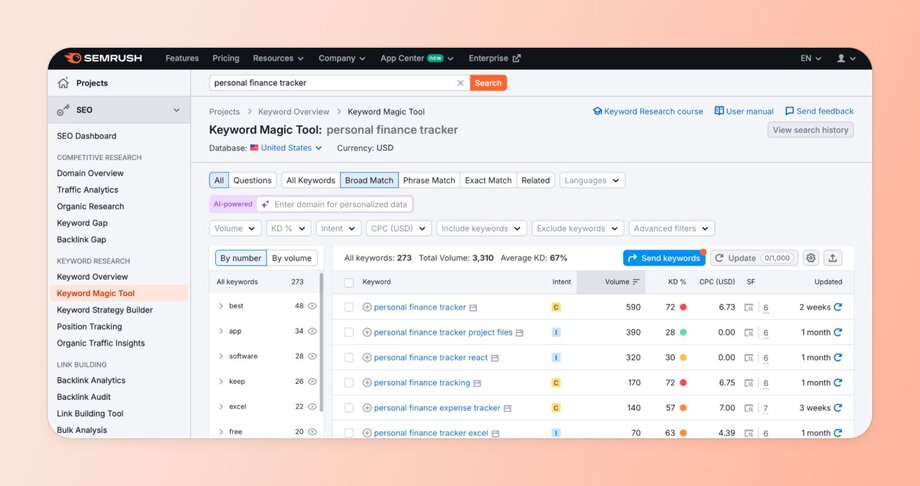
💡Also, we suggest spending more than 5 minutes on your product description. It’s one of the first things people will see, and honestly, it does a lot of marketing for you.
A quick note on the psychology of selling digital products
Launching a digital product—especially for the first time—often comes with mental roadblocks, like imposter syndrome or self-doubt. Don’t let these feelings derail you!
Overcoming imposter syndrome
It’s easy to think, Who am I to sell this? But you don’t need to be an expert—you just need to be a few steps ahead. People aren’t investing in a PhD; they’re buying clarity, structure, and a shortcut to their goal.
Our advice? Focus on helping, not proving yourself.
Manage the creative process
Burnout often hits when you try to do it all at once. Don’t aim for the perfect, all-in-one product right out of the gate. Start smaller—a mini-course instead of a full program, one template before a bundle.
Also, don’t isolate yourself. Find other creators to talk to and learn from.
For example, when you start a Circle trial, you get access to the Circle customer community—which includes 13,000+ creators you can ask for advice, lessons learned, and tips for wherever you are in your journey. A little encouragement and honest feedback can keep you going when things get tough.
Don’t undercharge
Pricing trips up a lot of first-time creators. Many undercharge—either because of imposter syndrome or because they don’t realize how valuable their skills really are. The result? You end up earning far less than you should. That can be disheartening, especially after putting in so much work.
The key is to price based on value, not effort.
As Warren Buffett once said:
“Price is what you pay, value is what you get.”
Think about the outcome your product delivers. Does it save time? Make money? Reduce stress? That’s what your audience is really paying for.
Also factor in fees, marketing costs, and support needs. If your $200 product costs $150 to run and maintain, your margin will disappear fast.
Beyond one-time sales, there are other ways to maximize revenue:
- Subscriptions → Offer members ongoing value with fresh content or tools. This option works especially well for digital products like communities, coaching programs, or ongoing resource libraries. According to Circle’s 2025 Community Trends Report, 54% of community builders are monetizing with paid memberships, and 41% are using recurring subscriptions to drive predictable, long-term income.
- Bundles → Package related products together for a higher perceived value.
- Tiered pricing → Provide a basic version and premium upgrades for different budgets.
- Cohort-based pricing → Raise your price slightly with each new launch. Tatiana Figueiredo, a Circle Community Expert, recommends increasing cohort-based pricing by 20% with each new cohort to reflect growing demand.
👉 Watch Tatiana’s masterclass on pricing your Circle community, including examples of pricing strategies from real, successful Circle communities, how to start charging more (and why you should charge more), and inclusive pricing strategies.
Ready to build your digital product?
Digital products are one of the most scalable, flexible ways to grow your business—and they’re more accessible than ever. If you have knowledge, skills, or a system that helps people, there’s a way to turn it into a product.
Start with one idea. Build a small version. Launch it, learn, and grow from there.
You’ve got this—and the tools to make it happen.
With Circle, you can host courses, sell memberships, and build a thriving community—all in one place, under your own brand. And you won’t be doing it alone. Join a network of 13,000+ entrepreneurs who are creating, launching, and scaling their own digital businesses.